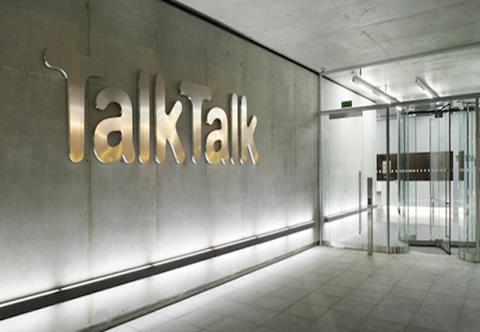
Need to know:
- Lifting total reward off the page and making it meaningful is an ongoing challenge for reward managers.
- A total reward strategy is a great way to attract and retain a talented workforce. But it is important to make sure that all benefits are included.
- When employees understand the value of their benefits, it can make them less likely to move elsewhere and the short-term pay rise suddenly looks less attractive.
An effective total reward strategy can encourage employees to stay loyal in a competitive jobs market. As Colin Miller, reward manager at Kent County Council, says: “The balance of power moves to the employer in a recession; people don’t feel they can up sticks and move on.”
As the economy recovers, power shifts back to employees. However, it is easy for both employers and employees to take valuable benefits for granted. Reward professionals and their advisers are on a mission to ensure that they are identifying and attaching tangible values to the many benefits their organisations offer, as well as making sure a clear strategy is underpinning their efforts.
Challenge to integrate reward
Total reward strategies are coming of age, but they are experiencing some teething problems along the way. Chris Charman, principal in Mercer’s talent business, says: “Organisations aren’t particularly great at integrating their total reward. They still struggle to bring that together into something that’s meaningful for employees.”
David Wreford, European leader of Mercer’s workforce rewards practice, adds: “Mostly it’s a series of superlatives on a website.”
While an employer may implement total reward, it does not always communicate this sufficiently to get people’s hearts and minds behind it, says Jeff Fox, senior benefits consultant at Aon Employee Benefits. “My experience of total reward is it gets talked about a lot in HR and reward circles but it hasn’t met its potential yet,” he explains.
Attach value
One reason for this is that it can be difficult to attach a value to everything that could be included in a total reward statement. “Things such as performance management, and learning and development, go into total reward statements much less regularly,” says Fox. “Most [employers] want to include things such as that but the challenge tends to be how you value it and where you get that data from. That’s where the disconnect from the strategy and delivery arrives.”
Employers increasingly see flexible working as a key part of a 21st century total reward strategy. “Organisations are more willing to have agile working practices, such as place and time, job-sharing, all those kinds of arrangements,” says Wreford.
Again, the challenge is quantifying the value of these arrangements.
Some arrangement, such as voluntary benefits and recognition schemes, are not always included in total reward, says Mike Morgan, chief executive officer at People Value. “Total reward can be, ‘Here’s your salary, pension, private medical insurance, death in service’, with a number at the bottom,” he says. “What it doesn’t consider are questions such as how much does that employee save through the voluntary benefits scheme? How much did they receive as part of performing well in reward schemes? What we are seeing more and more in the voluntary benefits space is interest in how it can feed into a total reward scheme. To say, ‘This employee saved £1,500 on a new kitchen’, for example.”
To achieve this, there has to be a proper process that pulls in data from all areas of reward. “More than anything it’s a strategic decision to say, ‘We are no longer talking about just salary or just bonuses, we want to talk about all the great reasons to work here: pension scheme, life insurance, healthcare, all those things’,” says Fox.
Reach different generations
Another challenge for reward professionals is to ensure their total reward strategies both reach and appeal to a multi-generational workforce. “[Employers] have to communicate to different generations in different ways,” says Fox. “[They] can show things to employees in many more varied ways, for example [they] can access information on tablets. We have seen a strong prevalence towards employers wanting to show the statement on paper, partly because there is a feeling that when it arrives on someone’s doorstep they are more likely to read it.”
It is also important for an employer to include a range of benefits within its total reward strategy, to make sure it is appealing to people at different life stages. Scott McKenzie, joint managing director and head of change and employee engagement at communications consultancy Lansons, says: “Candidates are looking at a range of factors when making career decisions, and this will change not just throughout their time with an organisation but will be life stage dependent, so, for example, childcare vouchers will be really enticing to some parents, but if [employees] don’t require childcare, it’s not quite so attractive.”
While creating a compelling total reward strategy can be challenging, most will agree that these get great results. Total reward can help distinguish employers in the employment market, says Fox. “In this age of pay restraint where we are not seeing significant pay increases, focusing on total reward can be a way to differentiate between employers when [they] can’t necessarily pay people more.”
When Kent County Council first introduced its total reward strategy 10 years ago, it was seen as a way to distinguish the organisation as an employer, says Miller. Today, traffic to the Kent Rewards website, which includes access to voluntary benefits and discounts, is viewed as an indicator of success. By that metric, the council’s strategy is working: 70% of its staff are registered users. “It’s trying to help people make the most of what they’ve got access to,” Miller says.
The strategy can help staff retention, too. As Fox explains: “If an employee is looking to leave, they need to take into account their total reward figure. Their new employer may not offer medical insurance, for example. When looked at in the round, the pay increase could dwindle.”

TalkTalk gets the message across on total reward
Telecommunications organisation TalkTalk introduced a total reward strategy in 2011. As part of the exercise, it introduced banding to achieve clarity and alignment across different sections of employees
Sam Kirk, reward director at TalkTalk, says: “We brought all our benefits together at the same time and with great visibility. It helps people to think about it differently. Now they really think of pensions, for instance, in the round as part of their benefits package.
“It allows us greater transparency: everybody knows if they are in a band D, that is what they get. There is a greater level of trust for people; they absolutely know they have the same as their friends.”
Now, data is fed in in real time. “It has been relatively easy to bring all the benefits together because with [provider] Capita, it all sits in the same place,” explains Kirk. “We have a feed between Capita and Workday [Capita’s business management software] with files exported so if anyone changes their pension contribution that’s fed in. If someone decides they want a new childcare voucher structure, that goes into Workday.”
Total reward does not have to cost the earth to get big results, says Kirk. “Eighty per cent of our benefits package is employee funded,” she says. “We negotiate preferential rates, but the only things we pay for are pensions, healthcare, income protection and life assurance. The rest of the benefits are employee funded, and they tell us it’s an amazing package.
“Don’t be afraid to rip up the rulebook and talk to your employees about a proposition. It helps people to understand, particularly if you engage them from the offset.”
TalkTalk is also constantly looking at ways to improve its offering. “We are thinking about how we can help people with financial education,” adds Kirk. “As an employer we have a duty to help to them understand. It’s an area you don’t necessarily think of as being a benefit, but is still really important.”

















